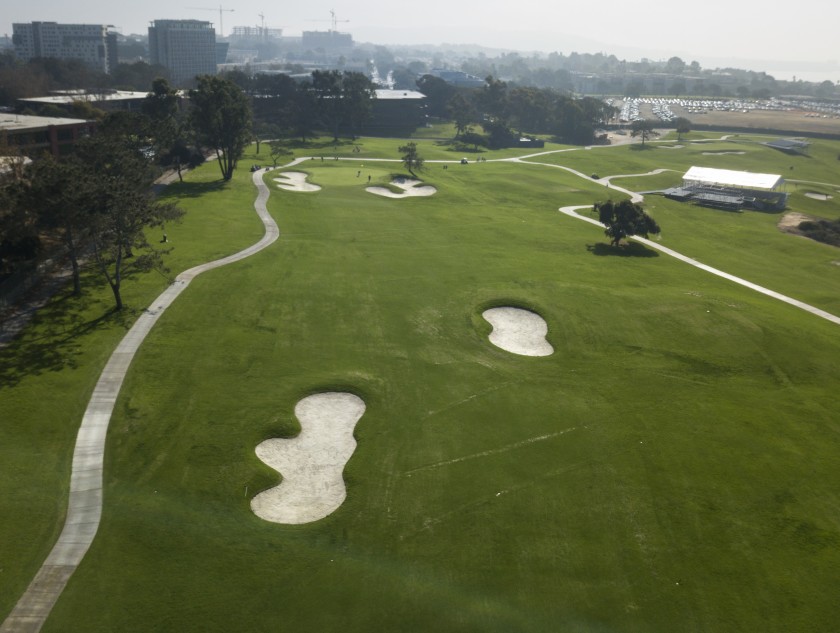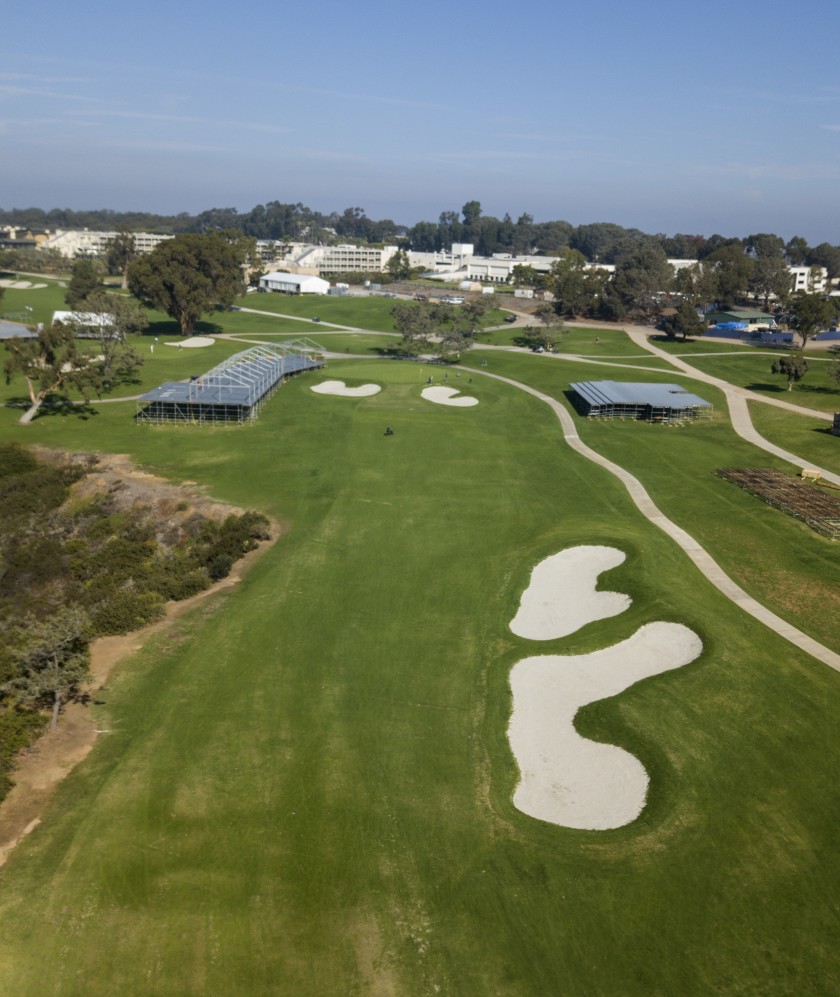‘Open Doctor’ Jones Ratchets Up The Challenge On Torrey Pines South
Tod Leonard
The San Diego Union-Tribune

Now known as the “Open Doctor,” golf course architect Rees Jones first began serving his internship as a 12-year-old in the summer of 1954.
That year, the U.S. Open was being played at Baltusrol Golf Club in New Jersey, not far from Jones’ childhood home in Montclair.
His father, renowned course architect Robert Trent Jones, was preparing to perform renovations of Oak Hill Country Club in Rochester, N.Y., and Olympic Club in San Francisco. Dad deputized his son with pen and paper, assigned him a hole, and asked him to chart where every player’s drive ended up.
“I don’t think he paid me,” Rees Jones joked recently. “But I got an official badge.”
More than 60 years later, Jones has the PGA Tour’s Shotlink system to do the work, but he’s still performing the essence of his late father’s calling.
Sometimes, as in 2001 for the Torrey Pines South Course, Jones does a complete facelift to make a track major-championship ready. Other times, it’s nip-and-tuck stuff, like the work he recently completed on the South.
Billed primarily as a project to replace the course’s irrigation system, the city of San Diego’s golf division budgeted $14 million for the work. And while the contractor, Landscapes Unlimited, was out there in the last seven months replacing pipes and installing more than 2,000 computer-operated sprinkler heads, Jones and assistant Greg Muirhead added some tees and shifted around bunkers to help the course defend itself against the power of the modern game.
With the U.S. Open returning to Torrey Pines in 2021 after a successful first staging in 2008, the “Open Doctor” was at work again with the blessing of the United States Golf Association.
It was happy work for Jones, who has called Torrey Pines one of his three greatest projects, along with the public Bethpage Black in New York and private East Lake in Atlanta.
“I really believe,” Jones said, “that with Bethpage and Torrey Pines, we brought a whole different element of golfers into the fold for the U.S. Open — the public golfer.”
There are venerable courses that have been in the U.S. Open rotation for decades, and most have had to change to keep up with the advancements in golf ball and club technology.
In 2010, the year that Shotlink first measured every drive on tour, 12 players averaged 300 or more yards off the tee.
That number in the 2018-19 season? An astonishing 50 players.
Annually ranked as one of the most difficult courses on the tour for the Farmers Insurance Open, Torrey South still needed some tweaking to strengthen its defense.
“I think what the USGA likes about Torrey Pines, and what I like about it, is that you have to think about your drive,” Jones said. “It’s not like (recent U.S. Open venues) Erin Hills or Chambers Bay, where you can just bang away.
“I truly believe that if you make a player think, if he’s got to engage his mind, he’s going to hit a better shot. If it’s bombs away, they can hit some terrible shots.”
While there are numerous subtle changes throughout the South Course, the most striking alterations were made on the par-5 ninth, and the par-4 10th, 15th and 17th.
At the ninth, Jones added a cross bunker in the middle of the fairway about 50 yards short of the green. Since going for the green in two shots on par 5s is commonplace now on tour, Jones said, “We wanted them to think about the second shot.
“Depending on where you drive it, you have to decide how close you want to try to get to the green.”
Perhaps just as interesting was the addition of a tightly mowed collection area on a slope behind the ninth green. The area wasn’t part of the original plan, but was added when Jones thought there needed to be a greater penalty for over-shooting an approach to a deep pin.
The next hole, No. 10, was arguably the most bland on the course.
“The back nine really started at 11,” Jones said., “The 10th was a driver, wedge every time.”

A new tee was built to make the hole longer, and the visual changed dramatically, with the left side of the fairway split with a bunker, while a right fairway bunker pinches the landing zone.
It’s a more interesting hole for all level of players, who are enticed from every tee to try to drive over the left bunker.
Jones said USGA course setup man John Bodenhamer is a big fan of Torrey South’s closing stretch of the 14th through 18th holes.
“The cream is going to rise to the top on those holes,” Jones said.
Jones insisted that one thing we won’t see in the ’21 Open is No. 14 played as a driveable par 4, as it was in ’08.
“Tiger didn’t like it, and I don’t think he played it very well that week,” Jones said with a chuckle.
“It’s a good mid-length par 4. It was never meant to be driveable because the entrance to the green is too narrow.”
The 15th hole is one that’s changed significantly through the years. The trees on the left, which blocked a clear approach, have been thinned by storms. The answer has been to just keep making it longer in the re-dos, and a new tee that will only be used for the U.S. Open tacked on 40 yards and now makes it really daunting at 515.
The 17th will be more fun to watch and harder to play. The back tee was moved closer to the canyon and so was the fairway, which is now pinched to about 26 yards wide in the driving zone.

Not quite as narrow is the landing area at the demanding par-4 fourth. But that fairway was moved closer to the edge of the cliff, and the bunker fronting the green was shifted to give players a clearer approach to each side of the green.
Other than San Diego-based tour players, most will get their first look at the South in practice rounds on the Monday of the Farmers Open in late January.
“What I’m proud of when I watch the Farmers,” Jones said, “is that the players respect the course. They feel like they get what they deserve.”